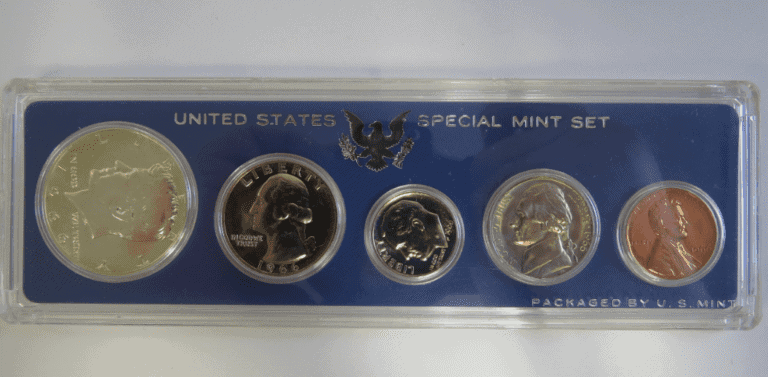What Is the 1966 Roosevelt Dime Made Of?
Since it came entered circulation in 1946, the Roosevelt Dime has served as a continual reminder of President Franklin D. Roosevelt’s support for the March of Dimes and his efforts to eradicate polio. Chief Engraver John Sinnock created the design when Congress requested a new dime in 1945. Sinnock’s design debuted in 1946, taking the place of the previous Winged Liberty Dime.
The obverse side of the coin features a bust of President Roosevelt looking to the right.
The words “LIBERTY” and “IN GOD WE TRUST” can be found in the right field and margin.
The year of mintage and Sinnock’s initials may be seen at the lower left of Roosevelt’s bust.
A flame, which represents liberty, is the main image on the coin’s reverse. On either side of the flame, there is only one cluster of olive branches. “E PLURIBUS UNUM” is written in the gap between each branch and the flame. “UNITED STATES OF AMERICA” and “ONE DIME” are written above and below the image, respectively.
While pre-1965 Roosevelt Dimes contained silver, from 1965 onwards the Roosevelt Dime was comprised of 75% copper and 25% nickel. As a result, it had a diameter of 17.9 mm and a weight of 2.27 grammes. Reeding may be seen on the coin’s edge.
Despite being one of the longest-running coin series now in circulation in the United States, Roosevelt dimes have gotten less attention from collectors than other types. This might be partially due to the series’ lack of significant rarity, except for a few variant coins or a few low-mintage coins.
In 1966, the average price of a home was £3,840, and a gallon of gasoline cost 5 shillings (or 26p). The adoption of a hazardous warning on cigarette packs, several USSR and US space flights, John Lennon’s remark that the Beatles were more famous than Jesus, several USSR and US space flights, and of course England’s infamous victory over Germany to win the world cup, were all significant events in 1966.
1966 Roosevelt Dime Varieties
1966 Roosevelt Dime (No Mint Mark)
Edge: 115 Reeds
Place of minting:Philadelphia/Denver/San Francisco
Year of minting: 1966
Face Value: $0.10
Quantity produced:145,790,000
Composition:75% Copper and 25% Nickel
Mass: 2.27 grams
Diameter: 17.19 millimeters
Thickness: 1.35 millimeters

1966 Special Mint Set (SMS) Dime
The Mint failed to produce a proof set in 1966 due to a lack of materials and the growing price of silver metal. Instead, a Special Mint Set was created. Although proof sets are produced using greater tonnage dies to enhance the coin’s details and give them a higher grade, special mint sets still retain a beautiful mirror-like sheen. The Roosevelt dime, Lincoln penny, Kennedy half dollar, Jefferson nickel, and Washington quarter were all included in the 1966 Special Mint Set. Even though this Mint Set was produced in San Francisco, it lacks the S mintmark that was present on dimes from other years.
In 1966, the Mint produced 2.2 million Special Mint Set dimes, setting a new record. The value of these coins is lower than you may anticipate for Mint Set coins due to the enormous quantity of 1966 dimes in the Mint Set. Even at the better grade of MS67, a 1966 Special Mint Set dime is only worth $1 at MS60. The few Special Mint Set dimes that are still available have an estimated value of $245 at MS69 and are extremely uncommon in grades MS68 or higher. The most valuable Special Mint Set 1966 dime, according to PCGS, sold for $12,500 at SP67 in 2021.
1966 Dime Off-Center Strike Error

When the blank planchet is improperly positioned between the upper and lower dies, it results in an off-center strike. Due to the uneven location, only a portion of the coin’s design was actually struck. Off-center strike errors are extremely frequent, but they are also among the most obvious, meaning it simply takes a quick glance to realise the design on the coin is misaligned or absent entirely. The value of 1966 off-center strike dimes ranges from $10 to $20.
1966 Dime Clipped Planchet Error
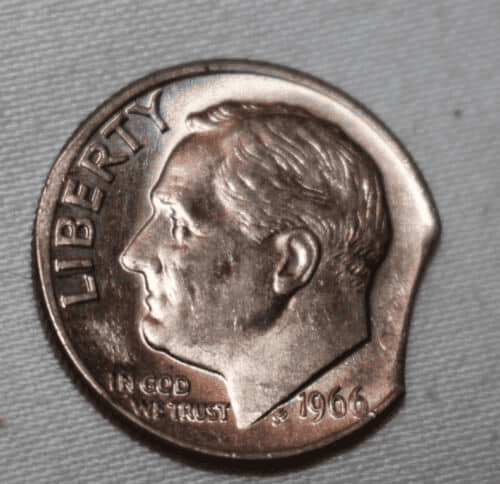
Coins with clipped planchet errors appear to have a small portion of the coin’s edge broken off. This mistake occurs when the coin is fed wrongly into the planchet-cutting device, causing the device to cut into the coin’s edge. Roosevelt 1966 dimes with cut planchet are most desirable when they are elliptical. On the open market, these could sell for up to $30.
1966 Dime Missing Clad Error
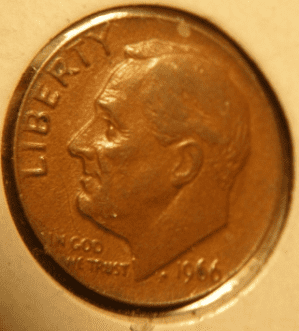
Although it happens very rarely, the missing clad error still occurs. This mistake happens when one of the coin’s metal or clad layers is missing. The 1966 dime is a clad coin, consisting of an exterior copper-nickel alloy and a copper core. In some coins, the alloy that covers the coin’s front and back may be missing.
A missing clad mistake makes the dime appear thinner where the clad is lacking or causes it to weigh less than it actually does. In areas of the coin where the clad is lacking, it may also be brown or brass orange in colour. The 1966 missing clad mistake is valued by numismatic services at about $600.
1966 Dime Doubled Die Error
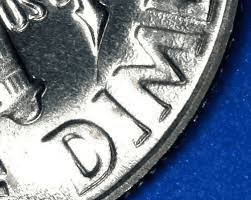
The most frequent and occasionally most lucrative coin error is the double die error. The finished design appears to have been printed twice, one on top of the other but slightly offset, when this problem occurs when the coin press replicates an image on the same side of the coinThe word “Liberty” appears to have been printed twice on some 1966 dimes.
The value of the coin increases with the degree of visibility of the double die inaccuracy. The auction estimate for the double-die error 1966 Roosevelt dimes is between $4,000 and $125,000.
1966 Dime Misplaced Die
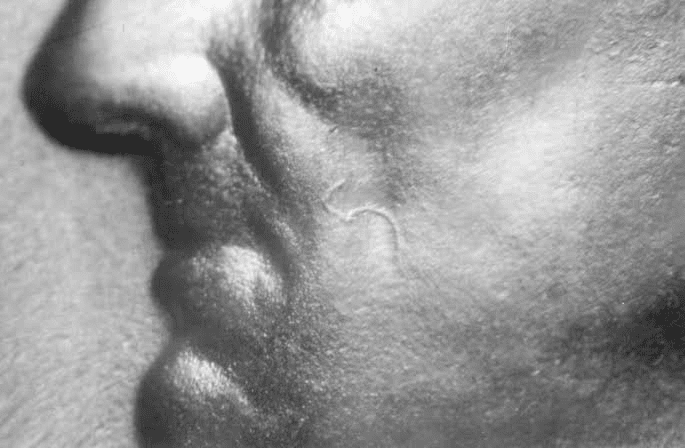
Some of the Roosevelt dimes from 1966 have a clear die-positioning mistake. This mistake happens when the planchets are improperly positioned between the higher and lower dies that are used to stamp the coin’s obverse and reverse designs. The president’s cheek displaying the number “5” is a significant mistake. The ‘5’ needs to be visible and distinct in order for the dime error to have value. A dime of this calibre might fetch more than $2,000 at auction.
How Much Is 1966 Roosevelt Dime Worth Today?
The 1966 Dime’s face value is worth five times more than its melt value, which is only $0.024, because any silver content has been removed. This suggests that 1966 Dimes have collectable value in addition to their intrinsic metal worth. The predicted values for 1966 normal strike dimes in each grade are listed below.
1966 Dime Value Chart |
||||
| Mint Mark | Good | Fine | Extremely Fine | Uncirculated |
| 1966 No Mint Mark Dime Value | $0.15 | $0.15 | $0.15 | $200 |
| 1966 Special Mint Set Value | – | – | – | $245 |
How Does The Grading System Work?
The Sheldon Scale is used by numismatists to provide a numerical value to coins. The Sheldon Scale goes from poor (P-1) to perfect mint state (P-1) (MS-70). Coins were originally evaluated using words to reflect their condition (Good, Fair, Excellent, Etc.). Unfortunately, coin collectors and dealers had different ideas about what each of these terms represent.
Professional numismatists joined together in the 1970s and established coin grading standards. These numismatists now assign grades at key places on the seventy-point scale, using the most regularly utilized numeric points in conjunction with the original adjective grade. The following are the most common coin grades:
- (P-1) Poor – Indistinguishable and probably damaged; if used, must have a date and mintmark; otherwise, rather battered.
- (FR-2) Fair – Nearly smooth, but without the damage that a coin graded Poor often possesses. The coin must have enough detail to be identified.
- (G-4) Fair – Inscriptions have merged into the rims in some areas, and important elements have been mostly erased.
- (VG-8) Very Good- A little weathered, but all of the primary design elements are visible, albeit faintly. There is little if any, central detail left.
- (F-12) Good – The item is very worn, yet the wear is even, and the overall design details stand out clearly. Rims are almost completely isolated from the field.
- (VF-20) Very Fine – Moderately weathered, with some finer features still visible. The motto or all letters of LIBERTY are readable. Both sides of the coin have entire rims that are separated from the field.
- (EF-40) Extremely Fine – Gently used; all gadgets are visible, and the most important ones are bold. The finer details are bold and clear, however, light wear may be seen.
- (AU-50) Uncirculated – Slight evidence of wear on the coin’s design’s high points; may have contact marks; eye appeal should be adequate.
- (AU-58) Uncirculated Choice – Slight traces of wear, no severe contact marks, almost full mint shine, and great eye appeal.
- (MS-60) Mint State Basal – Strictly uncirculated; no indication of wear on the coin’s highest points, but an unsightly coin with reduced luster, visible contact marks, hairlines, and other flaws.
- (MS-63) Mint State Acceptable – Uncirculated, but with contact scratches and nicks, little reduced shine, but otherwise appealing appearance. The strike is weak to average.
- (MS-65) Mint State Choice – Uncirculated with great mint shine, very little contact blemishes, and exceptional eye appeal. The strike is unusually severe.
- (MS-68) Mint State Premium Quality – Uncirculated with superb luster, no obvious contact marks to the naked eye, and exceptional eye appeal. The strike is quick and appealing.
- (MS-69) Almost Perfect Mint State – Uncirculated with perfect brilliance, a sharp and appealing strike, and extremely good eye appeal. A near-perfect coin with minor imperfections in the planchet, strike, and contact markings (seen only under 8x magnification).
- (MS-70) Mint State Perfect – Under 8x magnification, there are no tiny imperfections discernible; the strike is crisp, and the coin is perfectly centered on a beautiful planchet. Rarely seen on a coin, this coin is bright and whole, with original luster and exceptional eye appeal.
Where To Buy Or Sell 1966 Roosevelt Dime?
Due to its lack of intrinsic metal worth, the bulk of 1966 Dimes are sought after by beginning collectors and those who value the nostalgic nature of the mintage year. Therefore, internet markets like eBay and Etsy are the greatest venues to purchase and sell 1966 dimes. Roosevelt dime specimens that cost extra, like errors or examples from a high-quality mintage, can be bought and traded on specialised websites like Vcoins.
FAQs
Should a 1966 dime have a mint mark?
No, due to the 1965 coinage act, mint marks were removed from all coins in an effort to reduce the collectability of coins.
What dime is worth $1000000?
The 1894-S Barber Dime, a particular dime struck in 1894, is truly extremely valuable. In 1894, John Daggett, superintendent of the San Francisco Mint, ordered the creation of 24 special dimes; he distributed three to each of his seven friends and three to his little daughter. Nine 1894-S Barber dimes are still in existence today; two of these are reportedly still in use.
Why does my dime look gold?
Your dime has probably taken on a golden hue because the silver-toned cladding is starting to wear, revealing parts of the copper core underneath.

